ANTHONY HOROWITZ:Hello, I'm Anthony Horowitz. When it comes to books, creative writing doesn't have to just mean words printed in straight lines on a page.
ANTHONY HOROWITZ:The way a story is presented can be a part of writing's creative process. And amongst the best illustrations of this are comics, picture books and graphic novels, which, over the years, have been taken more and more seriously and looked on as real works of literature.
ANTHONY HOROWITZ:One example is The Savage, by writer David Almond and illustrator Dave McKean which combines text and drawings brilliantly and even throws correct spelling out the window.
NARRATOR:'Does the illustrated book for older children have a future? 'The recent publication of The Savage, indicates that it does.
NARRATOR:'Written by David Almond, with artwork by Dave McKean, 'The Savage combines traditional storytelling and illustration, 'with modern forms of narrative and layout. 'What emerges is a work of great power and originality.'
DAVID ALMOND:"I stared into the Moon. I felt sad, small, frightened, furious, bitter, lost, lonely but like I said, there's no words that can say how I really felt. I stared into the Moon and stared into the Moon.
DAVID ALMOND:Then I switched the light on again and I got my notebook and my pen and I started writing fast and hard."
NARRATOR:'The savage is a tale of imaginary revenge 'against the torments of a bully. A sometimes shocking read.'
DAVID ALMOND:'It's a book about bereavement. 'It's about a boy kind of exploring his grief. 'It's about a boy getting his own back on a bully.'
DAVID ALMOND:It's about how a family can kind of reconstitute itself after something tragic had happened to them. It's about all of those things.
NARRATOR:'The language that David Almond employs 'is deliberately illiterate and fractured for effect.'
DAVID ALMOND:'When I got to the bit where Blue is writing his own story' I did it in this kind of sketchy handwriting style and then messed up all the… all the spellings with the help of my daughter who said, "No he wouldn't spell it wrongly like that dad, he would spell it wrongly like this."
DAVID ALMOND:"And it wasn't long before he was standing at another gate and sniffing the air and this time it was the gate of Hopper's house and the smell there was justb-blank-blank-blank-blank-blank horrible."
NARRATOR:'Artist Dave McKean takes inspiration from the past 'and that most ancient of artforms, 'calligraphy.'
DAVE MCKEAN:'It's about a boy that is very primal 'and so it needed that sort of strong… 'statement visually. 'I ended up redrawing the faces many, many times. 'Especially the big sort of angry, shouty ones.'
DAVE MCKEAN:Just to try and undraw them in fact, to try and take the finesse away and try and take all the little touches that you put in to try and get it right.
DAVE MCKEAN:Try and get rid of that and try and get to the point where almost like a calligraphic you know, Japanese symbol, you can do it in one and once you draw it 20 times your hand kind of goes in the right place and all of those sort of subtle, pretentious bits and bobs fall away.
NARRATOR:'In the way that his illustrations are presented on the page 'McKean acknowledges a debt to the modern art of the comic strip.'
DAVE MCKEAN:'That style of work is very good at 'dealing with stories that are very internal 'that are about your private thoughts or private dreams.'
DAVE MCKEAN:A bit strange because a lot of comics usually are bigger, flashy adventure stories and everything's out on the surface but personally I think they're at their best when they're like handwriting they're like a private letter 'or a personal little story which is what this boy writes.
DAVE MCKEAN:'Sometimes the words lead the pictures, 'sometimes the picture is off in charge, 'and sometimes they sort of buzz against each other 'and create a third thing.'
NARRATOR:'Doyenne of the picture book, Shirley Hughes 'recognises the significance of this work. 'By combining past and present, The Savage looks to the future.
SHIRLEY HUGHES:'The Savage is really a breakthrough. 'It's an extraordinary book' because it's drawing very much on graphic novel strip cartoon but it isn't a strip cartoon, there are no speech balloons for instance but it's very filmic. It points the way in which maybe the illustrated book is going.
DAVID ALMOND:"Yes the savage was starting to learn about words, yes the savage was learning about what it felt like to be human and yes the savage was learning about good and bad in people but the savage was still a savage and sometimes he was nothing but a savage."
ANTHONY HOROWITZ:The Savage won awards, high praise and was later adapted into a stage play and a musical.
ANTHONY HOROWITZ:Another example of a book turning into something else can be found in Eoin Colfer's tales of the teenage genius and criminal mastermind, Artemis Fowl
CHILD:'How does one describe Artemis Fowl? 'Various psychiatrists have tried and failed. 'The main problem is Artemis' own intelligence. 'He bamboozles every test thrown at him.'
NARRATOR:-'Artemis Fowl shows how the book can be a flexible friend. 'It began life as a words-only bestseller 'but then it's comics-loving author 'decided to turn it into a graphic novel 'as an alternative way of storytelling 'to reach a wider readership.'
EION COLFER:I think we're going into a whole new market as well. There is a lot of kids out there who just read graphic novels or primarily read graphic novels so hopefully they will get to know Artemis now as well
EION COLFER:and maybe they'll go back and read the book if they're sufficiently interested in it. So it's kind of given a shot in the arm to the book as well.
NARRATOR:'The comic strip format was the ideal medium for this modern reinvention 'of the adventure story.'
NICOLETTE JONES:'It was originally described as "Die Hard with fairies" 'was the shout line when it was originally promoted.
NICOLETTE JONES:'It's a high-tech adventure, involving fairies, 'with a boy antihero'and the appeal of it is that it's got a bad guy boy protagonist 'and we enjoy him being evil.'
EION COLFER:'I wanted, in the opening chapter of Artemis 'for the modern world, to collide with the ancient fairy world 'and I thought I'd like to go to Ho Chi Minh city.
EION COLFER:'So I sent Artemis there, with Butler, his bodyguard 'and they track down this little sprite and he wants to find her book 'which is her fairy bible.
EION COLFER:'He has Butler photograph it with a digital camera 'and that, for me, was the moment, when this digital camera 'was right beside this fairy book,
EION COLFER:'where the human world and the fairy world, 'the modern and the ancient, came together 'and hopefully when this happens, the reader would think, "OK, this is something different."
NARRATOR:'The phenomenal cult appeal of Artemis Fowl 'has also given it a virtual new life in hyperspace.
EION COLFER:'What's happening now is fan movies, which go on YouTube. 'You'll get these kids with camcorders 'and make their own little movies of the book 'and post them up on the internet and they're fantastic.
EION COLFER:'The readers, they're making their own websites, 'talking about the books. Like there's something like 80,000 'Artemis Fowl fan sites around the world, which is unbelievable.'
Video summary
What happens when the words on the page aren’t enough to tell the story?
Anthony Horowitz introduces writers of young adult fiction such as David Almond and Eoin Colfer who have experimented with form to create exciting new ways of storytelling.
Using the example of David Almond’s The Savage, the commentary explores the way that Dave McKean’s illustrations incorporate graphic elements to the story, and how this then influences the story itself.
The words and images operate together to construct the story, and, by combining elements of the past and present actually combine to create a futuristic form of storytelling.
Character and visual representations build narrative and even invent language through fractured spelling.
Eoin Colfer then explains how his Artemis Fowl series builds on the tradition of comic strips to bring new life to the traditional adventure story and creates an alternative way of storytelling to reach a wider readership.
Teacher Notes
Students could adapt an extract from an existing text into an experimental graphic form, exploring some of the Artemis Fowl fan sites for inspiration.
This clip will be relevant for teaching English Language at KS3 and KS4 in England, Wales and Northern Ireland and National 4 and 5 in Scotland.
Comedy and tragedy in Great Expectations. video
Tony Jordan investigates Charles Dickens’ life during the writing of Great Expectations.
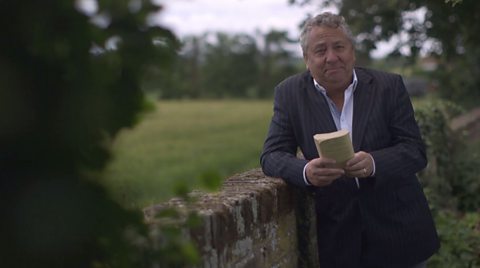
Music in performance poetry. video
Anthony Horowitz introduces the work of Kae Tempest to consider the musical quality of poetry.
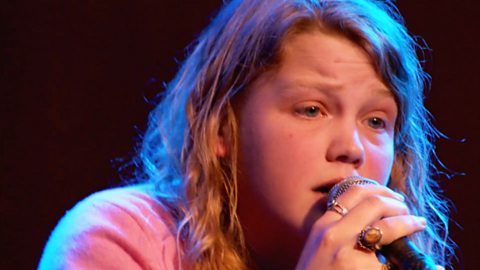
What is the power of poetry? video
Griff Rhys Jones on why poetry is powerful and how it differs from other forms of writing.

What inspires a writer? video
Anthony Horowitz discusses writing the Sherlock Holmes novels and shares his top tips for writing.

What makes travel writing engaging? video
Kate Humble offers detailed practical advice for ways to make travel writing engaging.
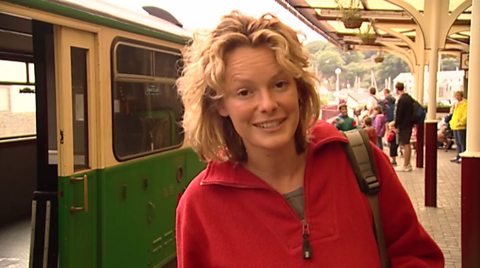
What makes good story writing? video
Jamila Gavin, Keith Gray, Jacqueline Wilson, David Almond and Malorie Blackman share their writing secrets, giving consideration to where they find their inspiration, what their writing triggers are, and how they get writing started.
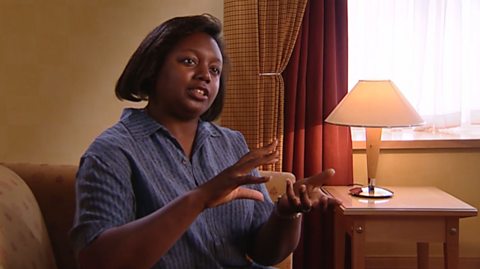
How did Arthur Conan Doyle create the character of Sherlock Holmes? video
Andrew Marr investigates the real-life inspiration for the character of Sherlock Holmes.
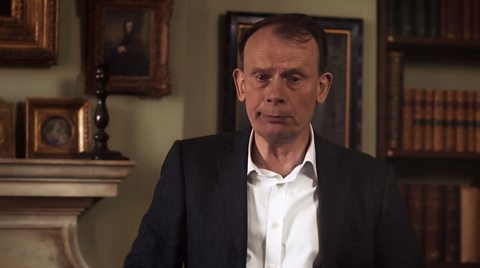
Ã˝
Ã˝